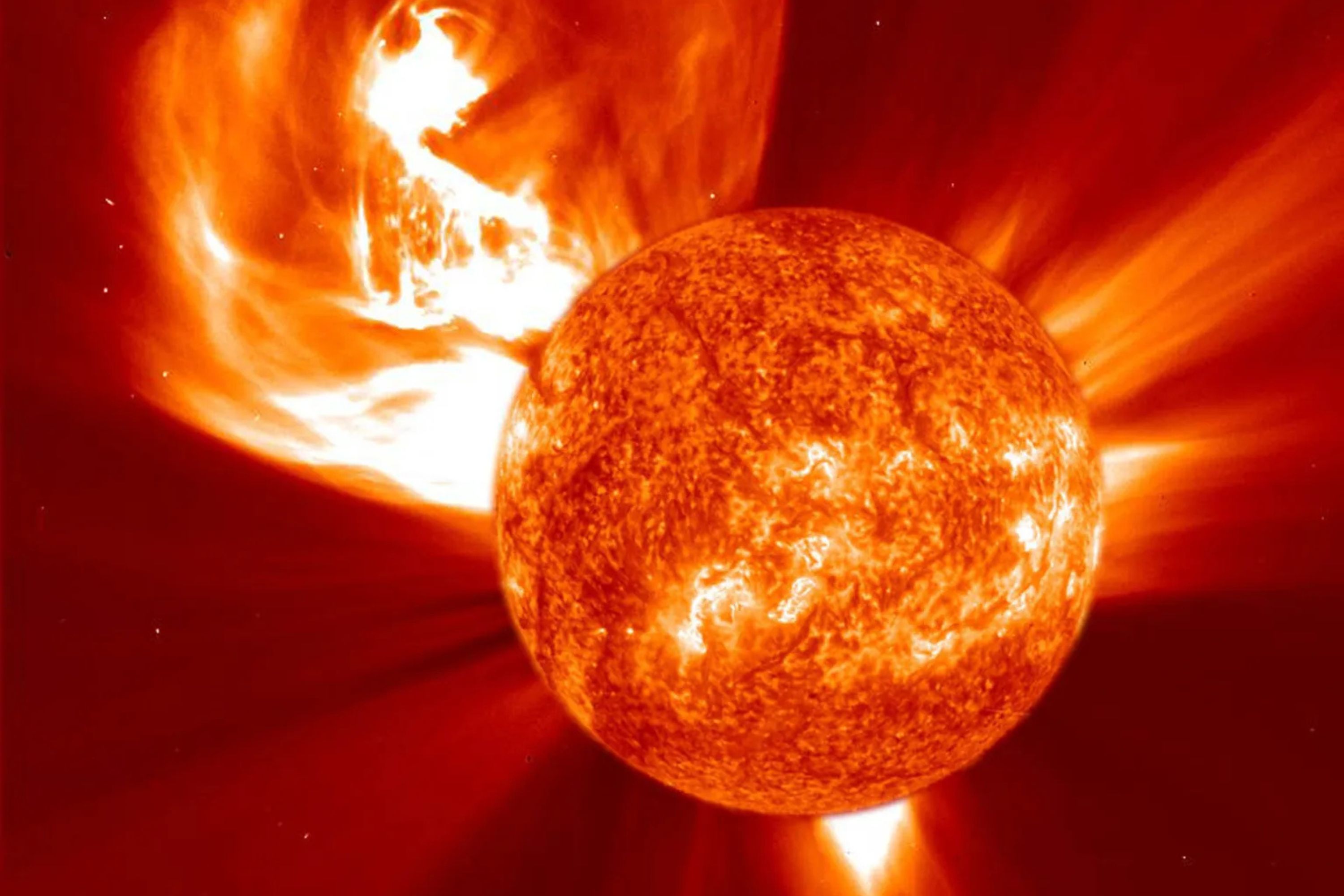The recent escalation of the Russia-Ukraine war has led to increasing talk of nuclear war, especially following repeated threats from Russian President Vladimir Putin against NATO countries. Newsweek looked at the impact of a Russian nuclear weapon on the capitals of U.S. NATO allies.
In September, Putin lowered the threshold of nuclear weapon use by saying: "This includes strategic and tactical aircraft, as well as cruise missiles and drones, hypersonic and other delivery vehicles. Russia reserves the right to use nuclear weapons in case of aggression, including if the enemy using conventional weapons poses a critical threat."
Since then, the U.K is believed to have granted permission for Ukraine to fire missiles supplied by London's defense ministry into Russian territory.
Newsweek used maps produced by Alex Wellerstein, a professor and historian of nuclear technology, to assess what the impact would be if Moscow attacked with its R-36M2 (also known as the SS-18 Satan), one of the largest and most powerful heavy intercontinental ballistic missiles (ICBM) ever built.
It can yield the equivalent of 20 megatons (20,000 kilotons) of TNT explosives and has a range of up to 10,000 miles.
The fireball radius (inner yellow circle), in which everything would be vaporized by intense heat rising to millions of degrees F, would reach around 15.1 square miles. The more moderate blast damage radius (inner gray circle), covering 442 square miles of the blast, would destroy residential buildings and probably cause widespread fires.
Anyone within 2,360 square miles of the explosion (the thermal radiation radius: wider orange circle) would be at risk of suffering third-degree burns throughout the skin, "often painless because they destroy the pain nerves," which can cause severe scarring, disablement and require amputation.
Within the light blast damage radius (wider gray circle), 3,490 square miles from the blast, glass windows should be expected to break, which can cause injuries.
See the impact of the same weapon on U.S. cities here.
Newsweek has contacted the defense departments for the U.S. and Russia, via email, for comment. It has also contacted NATO, via online contact form, for comment.
London, UK
In London, where there are on average 13,167,093 people in the full blast range (all four circles) of the simulated detonation in any given 24-hour period, some 3,941,740 people would die and 4,616,650 would suffer injuries.

Berlin, Germany
Some 2,011,330 people would die while 1,568,280 would suffer injuries in Berlin, where there are, on average, 4,452,381 people in the full blast range (all four circles) of the simulated detonation in any given 24-hour period.

Paris, France
In any given 24-hour period in Paris, there are, on average, 11,648,592 people in the full blast range (all four circles) of the simulated detonation. An estimated 4,957,180 would die and 4,616,650 would suffer injuries.

Ottawa, Canada
In Ottawa, where there are, on average, 1,302,359 people in the full blast range (all four circles) of the simulated detonation in any given 24-hour period, 586,940 would die and 427,990 would be injured.

Rome, Italy
Some 1,852,110 people would die and 1,399,340 would suffer injuries in Rome, where there are, on average, 4,420,652 people in the full blast range (all four circles) of the simulated detonation.

Amsterdam, Netherlands
Amsterdam would suffer an estimated 1,108,930 deaths and 1,792,920 injuries. In any given 24-hour period, there are on average 5,639,453 people in the full blast range (all four circles) of the simulated detonation in the city.

Ankara, Turkey
In any given 24-hour period, there are on average 4,191,361 people in the full blast range (all four circles) of the simulated detonation in Ankara, where there would be 2,229,850 deaths and 1,308,820 injuries.

Warsaw, Poland
Some 1,371,450 people would die and 957,820 people would suffer injuries in Warsaw. In any given 24-hour period, there are on average 3,117,151 people in the full blast range (all four circles) of the simulated detonation.

Madrid, Spain
In Madrid, 2,664,160 people would be killed and 2,093,680 would be injured. In any given 24-hour period, there are on average 6,375,201 people in the full blast range (all four circles) of the simulated detonation in the city.

Bucharest, Romania
There are on average 2,884,498 people in the full blast range (all four circles) of the simulated detonation in any given 24-hour period in Bucharest, where 1,463,540 would die and 782,510 would be injured.

Stockholm, Sweden
In Sweden, an estimated 838,540 people would die and 647,150 would suffer injuries. In any given 24-hour period, there are on average 1,867,060 people in the full blast range (all four circles) of the simulated detonation in the city.

Helsinki, Finland
In Helsinki, there are 1,249,210 people in the full blast range (all four circles) of the simulated detonation at any given 24-hour period. Some 498,480 would die and 442,240 would be injured.

The Context
There is currently much talk about nuclear war as conflict escalates between the U.S. and its NATO allies and Russia over the war in Ukraine.
Russian president Vladimir Putin recently signed an updated nuclear doctrine into law which emphasizes that Russia will make "all necessary efforts to reduce the nuclear threat" and aims to prevent escalating tensions between states that could lead to "military conflicts, including nuclear ones."
It also says that nuclear deterrence should also ensure "an understanding by a potential adversary of the inevitability of retaliation in the event of aggression against the Russian Federation and (or) its allies."
Ukraine used U.S.-made ATACMS missiles against a target inside Russia for the first time last week, after President Joe Biden allowed such usage.
This followed Moscow's deployment of North Korean troops to the front lines in the Kursk region, an action described by the Biden administration as a significant escalation of the conflict.
On Tuesday, Dmitry Medvedev, the Deputy Chairman of the Security Council of Russia and former Russian president said the U.S. was "seriously discussing the consequences of transferring nuclear weapons to Kyiv" but the White House told Newsweek: "We are not planning to equip Ukraine with nuclear weapons."





.png)













 English (US) ·
English (US) ·